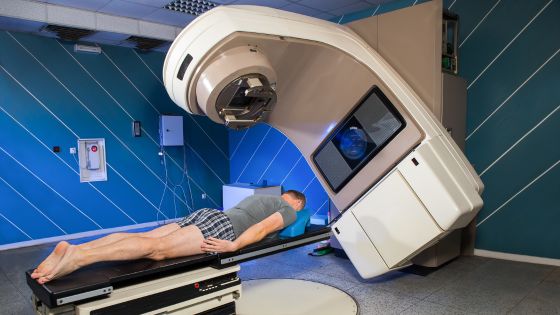Patients and their families frequently go on a journey into the complex world of cancer treatment options once the patient is given a diagnosis of cancer. Radiation therapy is one of these treatments that stands out as a particularly effective option in the fight against cancer. We will go into the principles of radiation therapy in this in-depth study, which will help you obtain a greater grasp of this important treatment method.

What Is Radiation Therapy?
High-energy rays or particles are used in radiation therapy, sometimes referred to as radiotherapy or irradiation, as a medical method to target and destroy cancer cells. Its main objective is to harm these cells’ DNA so that it stops them from proliferating and dividing. Radiation therapy is a treatment that can be used alone or in conjunction with other cancer therapies including chemotherapy and surgery. For more information on radiation therapy and its applications, you can visit https://www.targetingcancer.com.au/.
Types of Radiation Therapy
Radiation therapy comes in various forms, each tailored to specific cancer types and stages. The two primary types are:
1. External Beam Radiation Therapy (EBRT)
EBRT is the most common type of radiation therapy. It involves the use of an external machine that directs precise beams of radiation at the tumour from outside the body. This non-invasive approach allows for targeted treatment while minimizing damage to surrounding healthy tissues.
2. Internal Radiation Therapy (Brachytherapy)
Internal radiation therapy, or brachytherapy, involves inserting a radioactive source directly inside or very close to the tumour. This method delivers a concentrated dose of radiation to the cancer cells while sparing nearby healthy tissue. It is often used for gynecological, prostate, and certain head and neck cancers.
How Does Radiation Therapy Work?
Radiation therapy effectively kills cancer cells by damaging their DNA, making it impossible for them to continue dividing and growing. While normal cells can also be affected, they are generally better at repairing the damage. Radiation therapy is carefully planned to maximize its impact on cancer cells while minimizing harm to healthy cells. The treatment process involves several steps:
1. Simulation And Treatment Planning
Before the actual treatment begins, patients undergo a simulation process, which includes imaging scans (such as CT or MRI) to precisely locate the tumour and surrounding tissues. This information is used to create a treatment plan that outlines the dose, duration, and angle of radiation delivery.
2. Radiation Treatment Sessions
Radiation therapy is typically administered in daily sessions, Monday through Friday, over several weeks. Each session is brief, lasting only a few minutes. Patients lie on a treatment table, and the radiation machine is carefully positioned to target the tumour accurately.
3. Monitoring And Follow-Up
The radiation oncology staff continuously monitors each patient during therapy. If necessary, the treatment strategy may need to be adjusted. Patients continue with routine follow-up sessions after radiation therapy is finished to evaluate the efficacy of the treatment and keep an eye out for any possible complications or side effects.
Advancements in Radiation Therapy
Radiation therapy has made great strides recently, largely due to advancements in technology and therapeutic approaches. Notable advancements include:
1. Image-Guided Radiation Therapy (IGRT)
IGRT uses imaging technology, such as CT scans, during treatment to ensure precise targeting of the tumour. This reduces the margin of error and minimizes radiation exposure to healthy tissue.
2. Intensity-Modulated Radiation Therapy (IMRT)
IMRT allows for the adjustment of radiation intensity and beam shape, providing even more precise treatment delivery. It is particularly beneficial for complex tumour shapes or those located near critical organs.
3. Proton Therapy
Proton therapy utilizes protons instead of traditional X-rays for treatment. Protons can be precisely controlled, making this technology suitable for certain tumours where minimizing radiation to surrounding tissues is critical.
Conclusion
A key component of the all-encompassing cancer treatment plan is radiation therapy. Many patients diagnosed with this difficult condition have optimism because of its capacity to target and eradicate cancer cells. With a basic understanding of radiation therapy, patients and their families may confidently manage their cancer journey and make well-informed decisions. Radiation treatment has even more potential in the future as developments in the discipline continue to shape its efficacy and precision in treating cancer.
